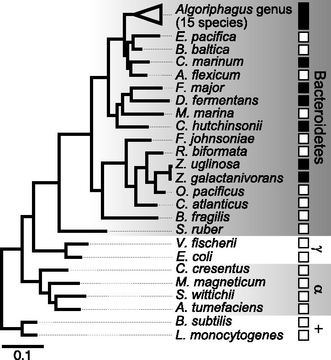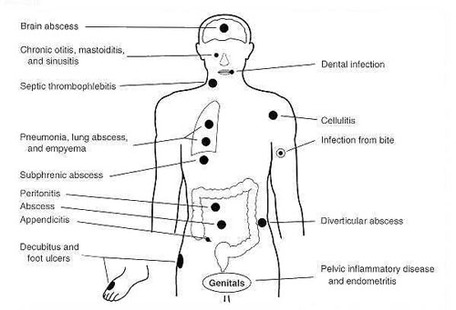
Bacteroidetes in the gut are responsible for degradation of high molecular weight organic matter, i.e., proteins and carbohydrates. Their genomes appear to be highly plastic and frequently reorganized through genetic rearrangements, helping them to adaptation to distinct ecological niches.

